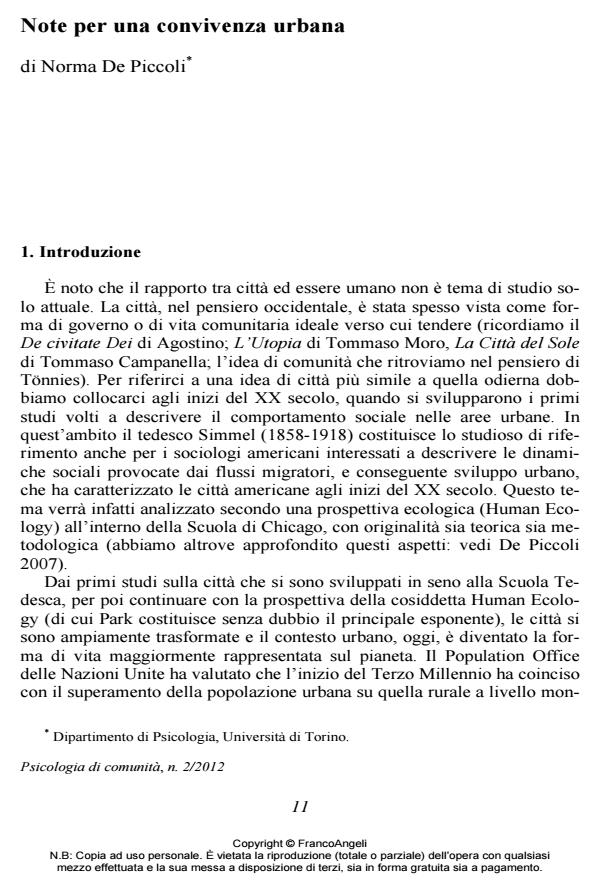Note per una convivenza urbana
Journal title PSICOLOGIA DI COMUNITA’
Author/s Norma De Piccoli
Publishing Year 2013 Issue 2012/2
Language Italian Pages 11 P. 11-21 File size 245 KB
DOI 10.3280/PSC2012-002002
DOI is like a bar code for intellectual property: to have more infomation
click here
Below, you can see the article first page
If you want to buy this article in PDF format, you can do it, following the instructions to buy download credits

FrancoAngeli is member of Publishers International Linking Association, Inc (PILA), a not-for-profit association which run the CrossRef service enabling links to and from online scholarly content.
The article presents a brief psychosocial analysis on the city, specifying the characteristics of the current urban setting. An analysis both of the Italian housing situation, with specific reference to the last decades, and of urban regeneration that have been made will follow. The recent urban interventions are of particular interest because they aimed (and aim) to improve the quality of life in residential contexts favoring the social mix and the development of social networks through direct forms of participation. These issues are here briefly presented in reference to the critical elements that must be considered, and possibly prevent, in the interventions design.
Keywords: Living social, city, urban regeneration, participation, social housing.
Norma De Piccoli, Note per una convivenza urbana in "PSICOLOGIA DI COMUNITA’" 2/2012, pp 11-21, DOI: 10.3280/PSC2012-002002